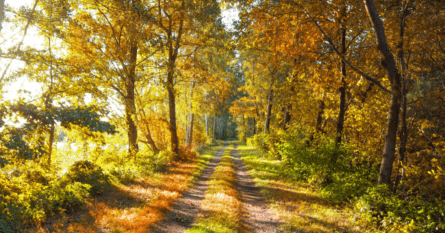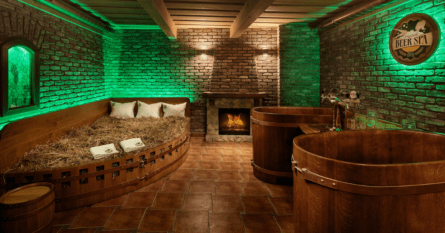Estimated reading time: 11 minutes
What is forest bathing, and how can it improve your health and well-being? Learn about the benefits, history, and best destinations for this practice.
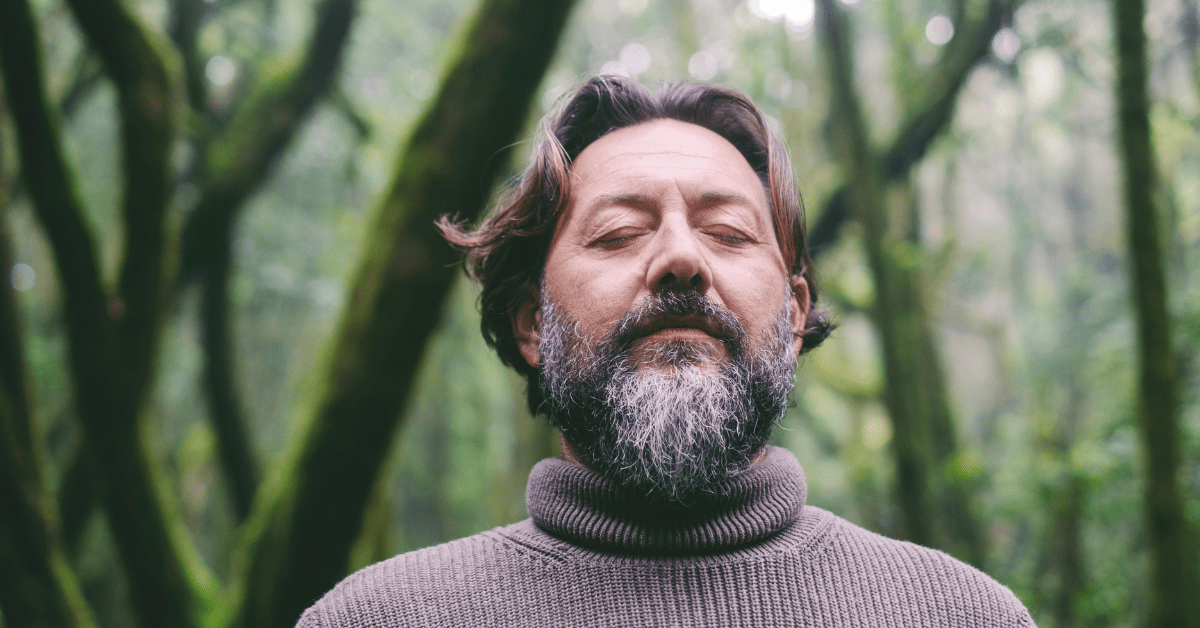
When was the last time you really slowed down and disconnected? For many of us with busy schedules, it’s difficult (ironically) to find the time—even when we know a good work/life balance is vital for our overall well-being. That’s why more and more people are turning to forest bathing, a simple and natural way to restore harmony and health. But, what is forest bathing exactly, and how does it work? In this forest bathing guide, we will give you everything you need to know about this ecotherapy practice, from its history and science to its tips and destinations.
Table of Contents
- What Is Forest Bathing and Why You Should Try It
- Meiji Jingu forest, Tokyo, Japan
- Yoshino-Kumano National Park, Kii Peninsula, Japan
- Baden Forest, Baden, Switzerland
- Nuuksio National Park, Eskoo, Finland
- Wye Valley, Wales, UK
- Rosedale Ravine Trail, Toronto, Canada
- Muir Woods, Bay Area, California, USA
- Atlantic Forest, São Paulo, Brazil
- Waipoua Kauri Forest, New Zealand
- Forest Bathing Safety Tips
- Embrace the Journey
What Is Forest Bathing and Why You Should Try It
Offered as a calming antidote to our non-stop, data-driven world, the practice of forest bathing prioritizes our mental and emotional well-being by helping us reconnect with nature. Forest bathing benefits us in many ways, from reducing stress to boosting immunity.
The name is not to be taken literally; in fact, the ‘bathing’ component of forest bathing refers to time spent immersed in the forest’s natural environment. Whether you are walking through the woods, sitting, meditating, or doing something similar, the idea is to be surrounded by the ecosystem of trees, foliage, forest floor, and wildlife. To spend time intentionally soaking up the sensory power of the woodland realm, in all its glory.
So, turn off your phone. Step out into the trees. Wander freely and listen to what’s going on inside. Doing so can have truly life-enhancing results. Studies have shown forest bathing can reduce stress hormones and blood pressure, while improving sleep quality, mood and the ability to focus. As if that wasn’t enough, time spent in the forest has been found to increase the activity of our ‘natural killer’ cells – the body’s ready-made defenses against viruses and cancers.
Read on to get inspired by nine exceptional forest bathing sites – many of them within easy reach of big cities.
Meiji Jingu forest, Tokyo, Japan
Forest bathing originated in Japan in the 1980s, where it is called ‘shinrin-yoku’. In Japanese culture, forest bathing links up neatly with the ancient belief system of Shinto, which places emphasis on respecting the natural world and our interconnectedness with it. The practice is often prescribed by doctors as a therapeutic remedy to the stresses of big city life – and, with nearly 70% of Japan also being forested, it’s only fair to start in the home of our subject. Appropriately enough, you can find an exceptionally beautiful forest near Tokyo, the world’s most bustling metropolis.

The Meiji Jingu Forest might be the youngest forest in our guide, with planting only finishing in 1920 by an army of over 100,000 volunteers. While it was carefully planned, the site is also considered sacred – and as such, there has been minimal human intervention since it opened. The results, over 100 years on, are truly spectacular.There are 234 types of Japanese trees that can be seen across Meiji Jingu’s 70 hectares, and nestled among them you’ll discover exquisitely crafted shrines and temples.
Due to its proximity to Tokyo, you can visit any time of year, meaning the entire seasonal kaleidoscope of the forest is easily accessible. From the vibrant green and slanting sunshine of summer, to the rich red and yellow tones of autumn and the pristine white of a snowy winter’s day, this space offers exceptional variety for your forest bathing de-stress.
Yoshino-Kumano National Park, Kii Peninsula, Japan
For those travelers who are spiritually-minded, the Yoshino-Kumano National Park south of Nara and Osaka is considered an especially sacred place. Heavily forested and mountainous in character, the park is brimming with gorges and ravines, cliff tops, waterfalls, and other natural features that cannot help but amaze.
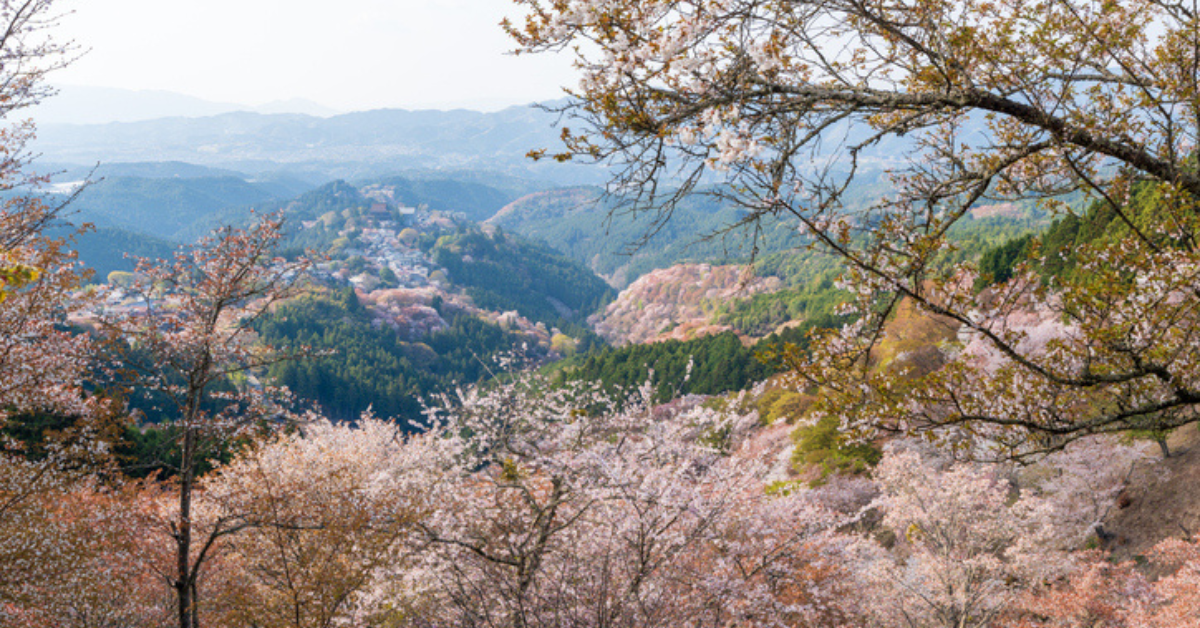
Nestled alongside these, you’ll find a network of venerable temples and shrines. The Kumano Kodo, an ancient pilgrimage route, also runs through the site, with one of its branches even taking you along part of Japan’s western coast, for more spellbinding views. For forest bathers, there is no shortage of options—the Yoshino Miyataki Manyou Therapy Road being one of the most highly rated.
Baden Forest, Baden, Switzerland
Japan may have invented the forest bathing concept, but awareness of the healing power of nature is, of course, universal. In central Europe, doctors have long encouraged stressed and anxious patients to find comfort and relaxation in the beauty of natural landscapes. In 1885, for example, German Doctor Max Joseph Oertel concocted a unique regime for cardiovascular and mental wellness called the ‘terrainkur’ – or walking cure – which directed patients towards green spaces. The legacy of doctors like Oertel lives on in many countries, including one of Europe’s most picturesque – Switzerland. Close to Zurich, you’ll find the gorgeous spa town of Baden, renowned for its hot thermal springs where visitors and locals have bathed all the way back to Roman times.
Nearby Baden forest, likewise, is truly perfect for a spot of forest bathing. As well as its fresh air and shady canopies, the forest is home to the legend of the Teufelskeller – The Devil’s Cellar! The story goes that, in these very woods, a princess was transformed into a tree by evil spirits, before later being saved from the curse. So, for those looking for a mythical atmosphere to accompany their forest bathing, this could be just the pick.
Nuuksio National Park, Eskoo, Finland
A big slice of wilderness just 45 minutes from Helsinki, Nuuksio National Park is overflowing with Nordic scenery that’s perfect for a more rugged forest bathing session. The park’s plunging valleys and hills are coated in evergreen spruces and dotted with crystalline lakes, making Nuuksio a particularly dramatic destination to unplug and enjoy the sheer abundance of nature.
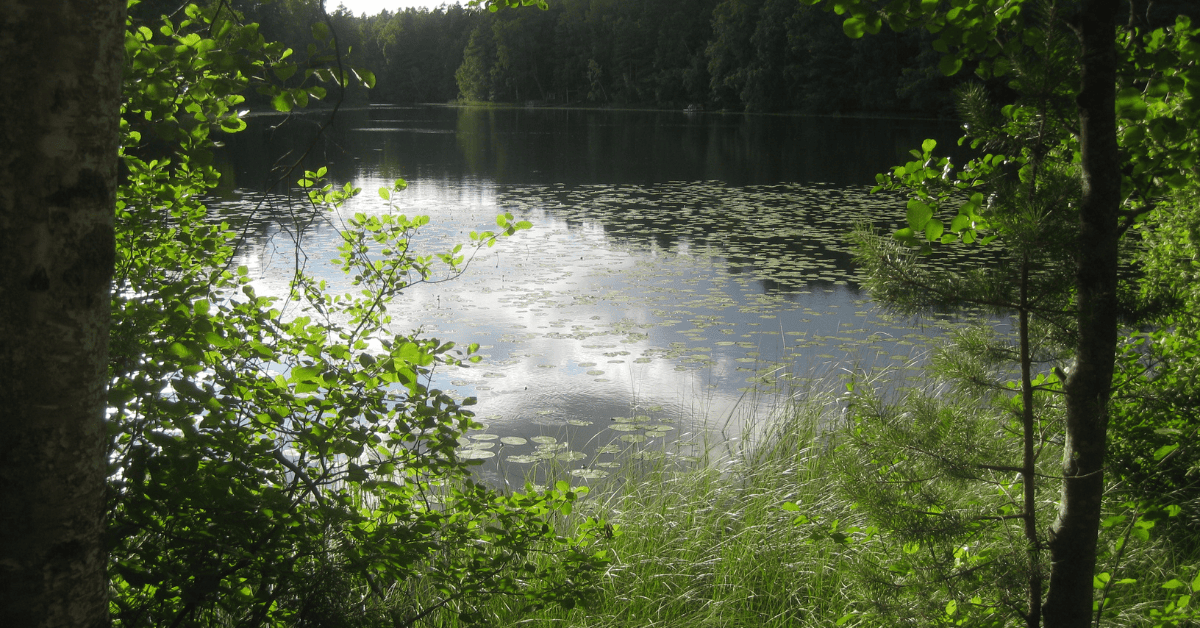
However, you don’t need to be an action hero to experience forest bathing here. In fact, the park caters to visitors of all abilities and ages, with a large variety of trails and natural features to explore. Make your way up to higher ground and you’ll be struck by the meditative quiet that’s one of Nuuksio’s hallmarks—and don’t forget to keep an eye out for the local population of Siberian flying squirrels while you’re there.
Wye Valley, Wales, UK
For a small island, the UK boasts a remarkable range of natural landscapes, and the Wye Valley in Wales is one of its most famously picturesque. Just an hour’s drive from Cardiff, this beautiful riverside swathe of woodland is classed as an area of outstanding natural beauty and offers a network of walking routes that are ideal for forest bathing. It’s even home to a training center for the UK’s The Forest Bathing Institute.
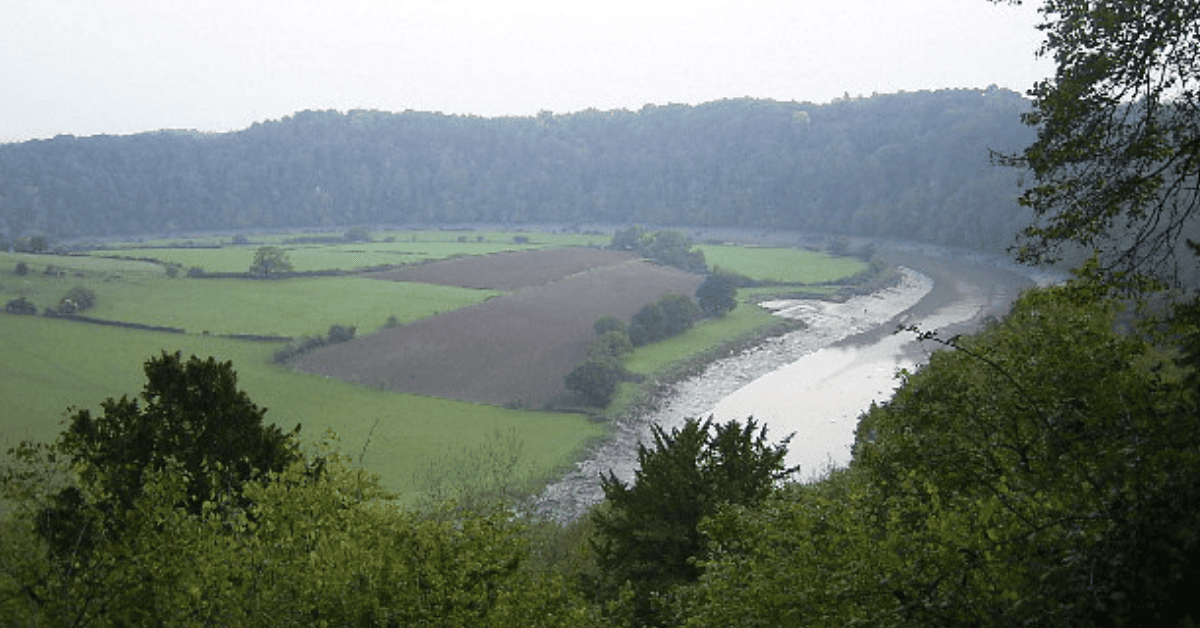
The Wye Valley Walk offers visitors up to seven days of connected trails, taking in gorgeous riverside villages and sites such as the ruins of Tintern Abbey. This area, in particular, has a strong literary and artistic connection, providing inspiration for romantic poets William Wordsworth and Samuel Taylor Coleridge, and painter J. M. W. Turner. The valley also plays host to the UK’s biggest literary festival at Hay-on-Wye. This spectacular combination of thick woodland, gleaming water, and poetic appreciation could be just what you need to reset.
Rosedale Ravine Trail, Toronto, Canada
What if you could flip the script on a city visit and lose yourself for a few hours in a hidden forest that’s actually inside the metropolis? In Toronto, you certainly can, thanks to the extensive network of rocky, forested ravines that’s woven through the city as a whole.
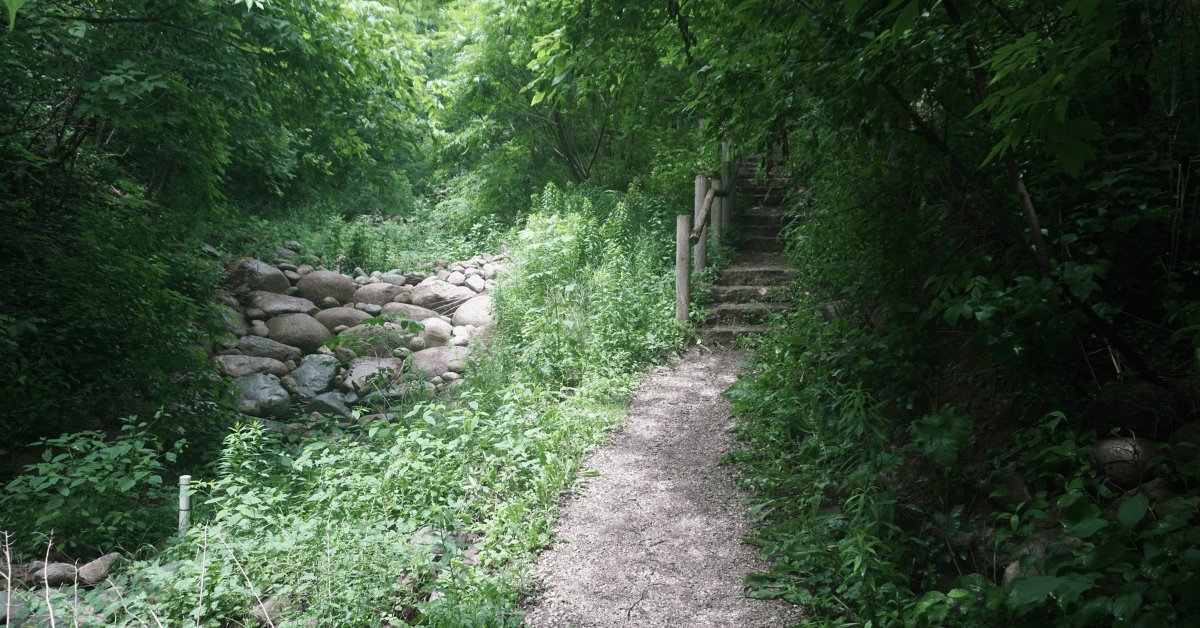
One key element of forest bathing is to immerse yourself in nature without a fixed destination or sightseeing plan. You are simply there to be, in the atmosphere of the forest; to wander without a fixed schedule or even a defined route, should you wish. And Toronto’s urban forest is tailor-made for such mindful perambulations—after all, you’re so close to the city proper that it’s hard to get lost.
The Rosedale Ravine Trail comes recommended for forest bathers in Ontario’s capital. From the city streets, you’ll head down an unassuming staircase and—voila!—enter another world of flowing streams, tall trees, and old abandoned railway lines. The circular route will bring you back to the hustle and bustle after an 8km communion with Toronto’s wild side.
Muir Woods, Bay Area, California, USA
A mere 12 miles’ drive from San Francisco, you can come face-to-face with towering giants wreathed in mist. The Muir Woods National Monument is part of the Golden Gate National Park, and is one of the few remaining stands of coast redwood in the Bay Area. These majestic trees reach up to 260 feet tall and, due to the forest’s location next to the Pacific, are often surrounded by a cloud-like, misty atmosphere. Most of the trees here are well over 500 years old, while some are even over 1,000.

Disconnecting from stressors is an important element of forest bathing, and Muir Woods caters to this with a total lack of cellphone signal. So there’ll be no live-streaming your adventure among the giants—the perfect excuse to switch off your phone for a few hours and feel humbled and calmed by this ancient ecosystem.
Atlantic Forest, São Paulo, Brazil
For those who don’t like to stray too far from urban comforts, the idea of forest bathing might seem enticing, but a little intimidating. Luckily, workarounds are available—and for those visiting Sao Paulo, a trip to the Atlantic Forest might be the perfect choice. As in many parts of Brazil, the jungle is closer than you think; the southern municipality of Juquitiba is just 70 km from Sao Paulo’s center and is renowned for being an area with very high vegetation. Despite being on the doorstep of the big city, Atlantic Forest is a truly wild place to forest bathe. As one of the most diverse ecosystems on earth, this moist tropical realm is absolutely brimming with miraculous flora and fauna. Over 2,200 species of animals live here alongside around 20,000 plant species, making it an ideal environment for wildlife spotters.
Waipoua Kauri Forest, New Zealand
New Zealand’s Kauri tree is among the country’s most impressive and symbolic native flora – and can be encountered firsthand in Waipoua Forest on the North Island. This ancient sanctuary contains nearly three quarters of these endangered trees, including two of the oldest and biggest. Tane Mahuta, known as the God of the Forest, is the largest kauri tree living today, thought to be between 1,250 and 2,500 years old. Te Matua Ngahere, or Father of the Forest, is likewise a huge kauri that may be as much as 4,000 years old.
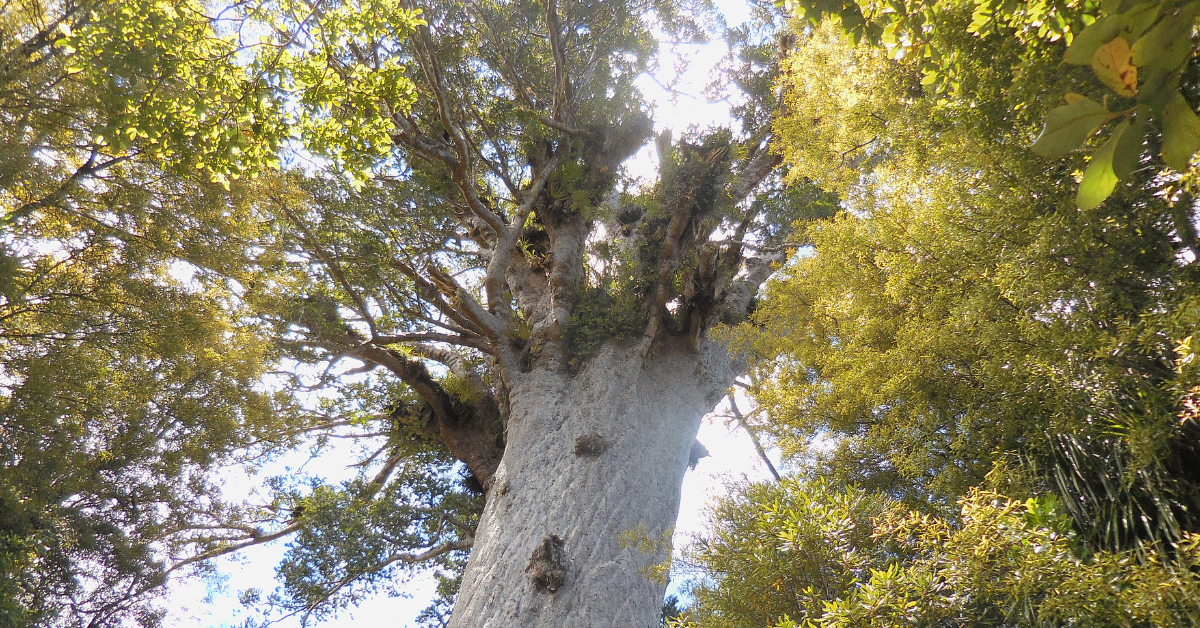
Walking beneath these giants and the lush rainforest canopy is surely ideal for forest bathing. A forest trail ensures no damage will be done to the kauri trees or wider ecosystem by your visit, meaning you can switch off from any stress and truly appreciate the beauty and energy of this miraculous environment.
Forest Bathing Safety Tips
- Before venturing out, make sure you use proper sun protection to prevent any adverse health effects.
- During certain seasons, the presence of pollen may be irritating, so it is important to take any prescribed allergy medication.
- Use bug spray on your body to repel insects and prevent any harmful bites that could distract you from enjoying forest bathing benefits.
- Silence any technological distractions. The entire point of forest bathing is to take a break from the whir and buzz and breakneck pace of the technological world.
- Stay on marked trails and pay attention to your surroundings. Remember to respect the forest and its inhabitants, and do not litter or damage any plants or animals.
- When possible, bring a friend or let someone know where you’re going and for how long.
Embrace the Journey
In this article, we uncovered the essence of “what is forest bathing,” and its profound benefits. Whether you’re a seasoned traveler or just starting out, incorporating forest bathing into your adventures can offer a deeply rewarding experience.
When you’re ready to explore new destinations, make sure to take advantage of Blacklane’s services for a seamless start or end to your journey. From our chauffeured airport transfers to city-to-city rides, we’ll provide the same level of professionalism and convenience everywhere. So, pack your bags, hit the road, and let your sense of adventure be your guide!

